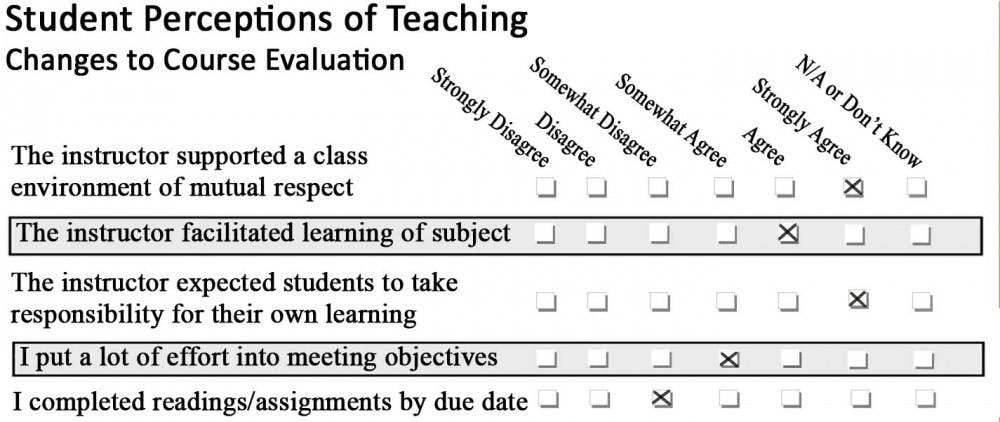Revised, re–worked and renamed, the new "Student Perceptions of Teaching" evaluation process is more comprehensive than the forms students used to fill out at the end of the semester.
Following months of planning and consideration on behalf of the Academic Council's "Task Force on Evaluations of Teaching," professors now have to seek an additional source of evaluation beyond required student feedback. New forms also allow faculty members to personalize the evaluations with their own course–specific questions.
"We use this, faculty use this, to get better," said Steven House, provost and vice president for Academic Affairs. "To get feedback from students on, 'What am I doing well? What am I not doing well? What do you think should be done? Help me do better.'"
Forms like these have been used in the past as the most important way to evaluate faculty performance, which House said is unfortunate as there are more effective ways to determine success and identify areas of improvement.
Running focus groups with students, asking another faculty member to observe a class or two and simply sitting down to chat with students about the way a course is taught are just a few of the methods House said professors may be seeking additional feedback on their performance.
"It's primarily about formation, formulative evaluation, of getting better (at teaching)," he said. "Sure, these evaluations or Student Perceptions of Teaching are also used as part of the promotion and tenure process. But they're really about making better teachers."
While the old forms asked students for some demographic-type data, including grade in the class, cumulative grade point average and class standing, the new form also asks students how many classes they missed in the semester and how frequently they completed readings and assignments on time.
Junior Alex Helman said she always tries to give thoughtful feedback to her professors because of its importance, but she thinks the addition of these two questions violates students' confidentiality.
"I would feel uncomfortable answering honestly then," she said. "If a student writes a horrible evaluation, the professor has enough information to narrow it down."
One of the triumphs of the form is its ability to capture the level of engaged learning in the classroom, according to Peter Felten, assistant provost and director of the Center for the Advancement of Teaching and Learning.
"My sense is one of the things the new form is aiming to do is reflect what Elon values about teaching and learning," he said. "There's more emphasis on engaged learning than in the past form."
Previously, fill-in-the-bubble questions allowed students to rank professors' adherence to each statement on a scale of one to five, meaning a professor could receive a neutral mark. Now students are given a scale of one to six, including a "not applicable" option, forcing responses to be decisive.
Junior Tyler Sickel said he does not think the old form needed to be drastically altered but he likes the new wording of most of these questions. The phrasing of the short–response questions could have been better changed, he said, because he thinks the new form makes it challenging for students to express displeasure with a course or instructor.
"I wasn't happy with my teacher and I feel there wasn't a way to express that adequately," he said.
House said he doesn't expect the data collected from the new forms to be radically different from what was previously acquired with the old system, but he does think the information will be richer.
"If someone's a really, really good teacher, will we suddenly find out that they're not? No," he said. "I think we'll find out that they're still really, really good"


